
Chiang Rai is 3 hours north of Chiang Mai and in hindsight we should have come up here for two or three days. Instead, we hired a driver and made it a one-day trip from Chiang Mai. Hiring a private driver for the day cost us 3,500 Baht (USD $100), not much more than joining a group tour at 3,000 Baht (USD $87), but it was more enjoyable, we created our own itinerary and went at our own pace. It was a long 13-hour day, but we are really happy we came here to see some of the more well-known temples.
Probably the most famous temple in Chiang Rai is Wat Rong Khun, better known as the White Temple. This is one of the most recognizable temples in Chiang Rai province and was created by master Thai artist Chalermchai Kositpipat who opened it to the public in 1997. The compound consists of nine separate buildings and the design is a vast departure from traditional Thai Buddhist temple art. The White Temple itself is made of basic concrete with a wooden roof but because it is adorned with white plaster and mirrored glass chips the overall effect becomes dazzling. Entering the temple, you walk past a sea of arms representing what awaits those who allow material desires to rule their life. No photos are allowed inside the temple but the details and whimsical features outside the temple are captivating. The White Temple is one of the most visited attractions around Chiang Rai so you can imagine what the crowds were like ☹️ The compound is free to visit but tickets to go inside the White Temple cost 100 Baht (USD $2.92) each. Because it was so crowded, we kind of rushed through the temple but we would love to come back and have more time to explore. Next time!!
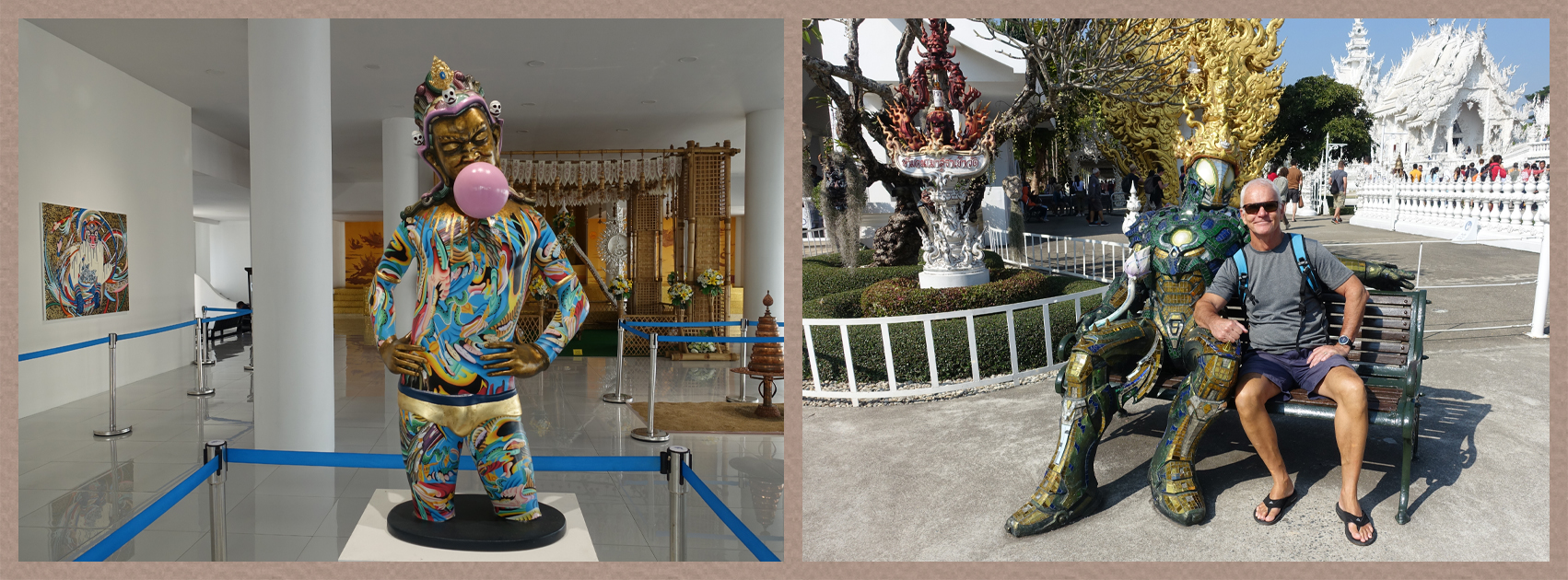
The second temple we visited was Wat Rong Suea Ten, the Blue Temple, known for its striking modern design. The monastery and pagoda were built on the ruins of an ancient temple abandoned 100 years earlier. The Blue Temple was completed in 2016, created by Phuttha Kabkaew, an artist who was a student of the White Temple artist, Chalermchai Kositpipat. The temple is immediately recognizable for its brilliant shade of sapphire blue, a color associated with purity, wisdom and lack of materialism that Buddhists aspire to. The exterior and interior walls are a feast for the eyes, embellished with gold and wildly colorful designs. Guarding the entrance to the monastic hall are two fierce and colorful Naga.
Inside the temple the celestial designs and varying shades of blue create a mystical feel. At the end of the great hall sits a massive white Buddha framed by towering filigreed columns.
Next up was Wat Huai Pla Kang and the White Wihan, perched atop a hill north of Chiang Rai town. This temple complex features three main structures, a nine-tiered pagoda, a Thai temple and the majestic white statue of Guanyin the Chinese Goddess of Mercy. The Guanyin statue is the tallest in Thailand and sits atop a pedestal of lotus flower petals. Her colossal form dominates the sky and when you turn around there are stunning vistas of the landscape.
Our final stop of the morning was at Baan Dam, the Black House, and I’m not sure about this one. It is the museum of another famous Thai artist, Thawan Duchanee, and one of the strangest and most interesting landmarks in Northern Thailand. There are about 40 buildings on the property and inside the main building is a very unusual collection of taxidermized animals, crocodile skins and strange carvings. All the buildings are made of wood and stained black or very dark brown giving the entire place a sinister feeling. Its said that this complex has the largest collection of animal remains made into furniture in the world, and watch out for all the phallic sculptures dotted around the compound.
After touring the Black House our guide took us to a restaurant for lunch where we tried the local specialty. Khao Soi is a Northern Thai noodle curry dish presented in a simple bowl, with a fresh lime wedge, shallots, and pickled cabbage. We added crispy pork to our order which in hindsight was not a great idea, it was basically deep-fried pieces of pork fat, and I am not a fan of fat so this remained in the bowl. But the rest of the dish was spicy and flavorful.
After lunch it was time to work our way back to Chiang Mai, with a couple of stops along the way. Singha Park is an agricultural tourism attraction with various activities, a theme park, a sports center, a farm and tea plantation. Our stop was brief, just to enjoy the scenery from the tea plantation viewpoint.
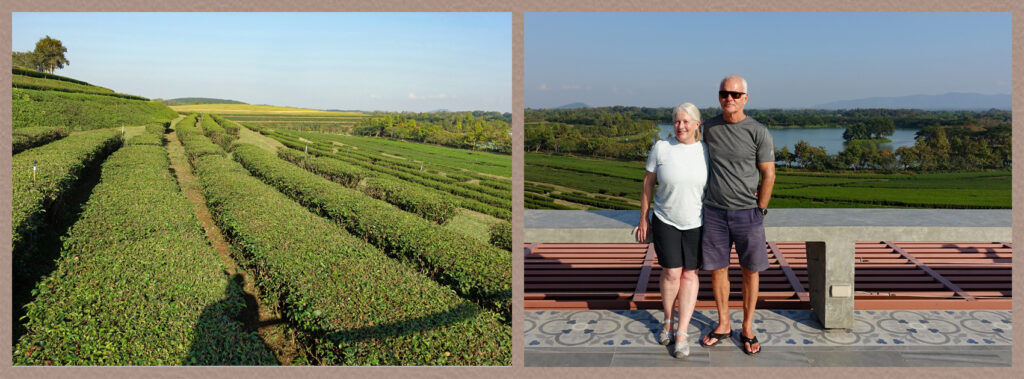
Wat Saeng Kaew Phothiyan was our final stop of the day. This temple is about an hour south of Chiang Rai and construction only began in 2010. Unfortunately, we arrived after closing so we were limited to a short walk around the grounds. At the end of a long day we were getting a little ‘templed’ out which is a shame because I think this temple is worth spending some time at. It’s one of the most colorful temples we visited with some interesting statues, beginning with the giant statues lining the parking lot. There are some interesting modern features in this temple such as the two demons holding up a large bronze bell, one is wearing red Converse sneakers, the other a pair of flip flops.
After a very full day we arrived back in Chiang Mai and collapsed on the couch for the rest of the evening. It was well worth the drive to Chiang Rai but it would have been nice to spend a few days here.

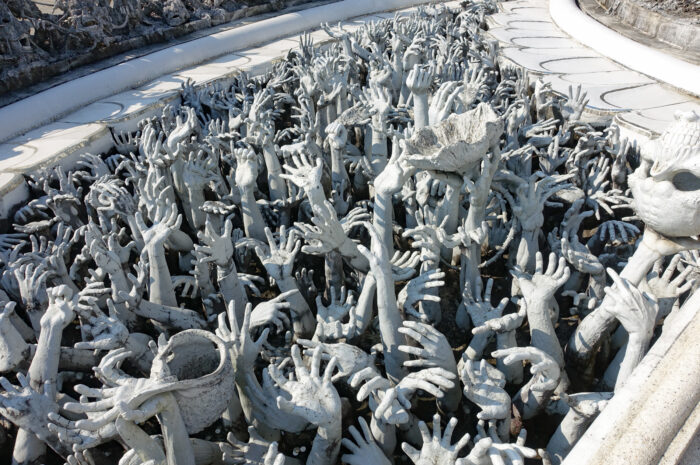
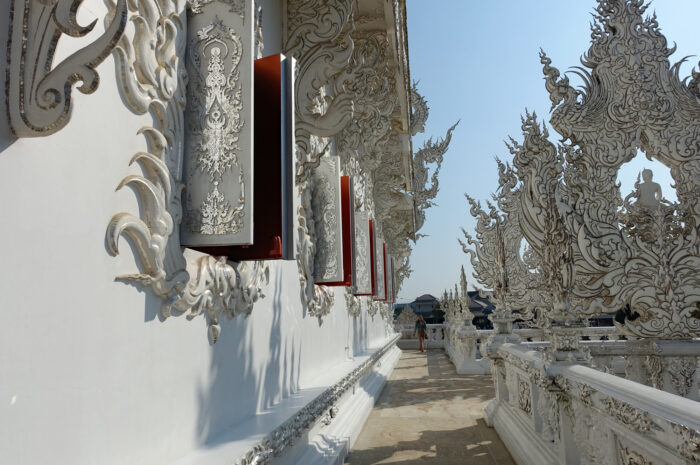
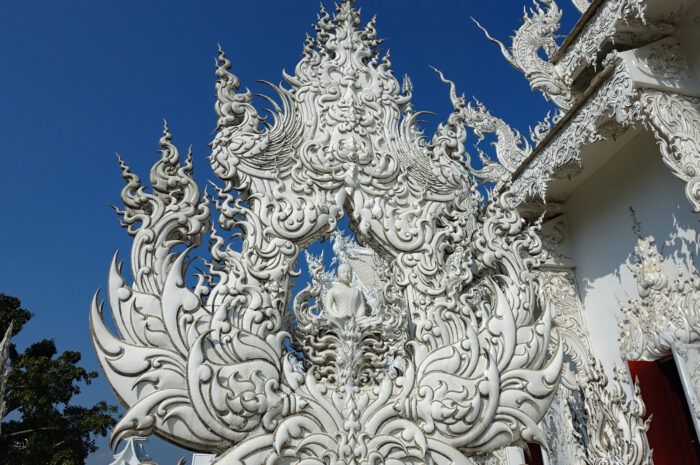

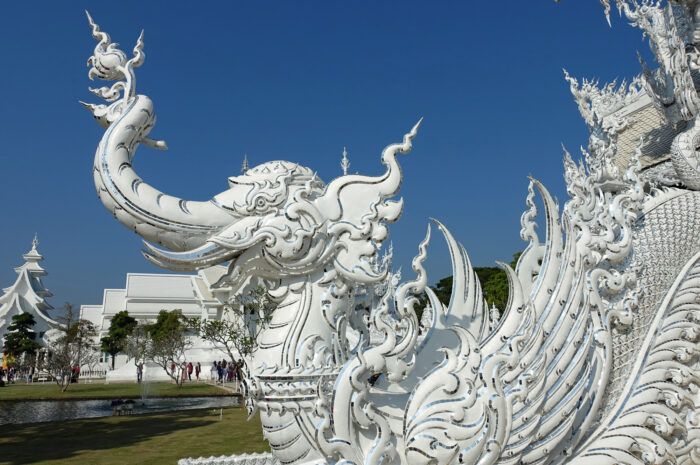
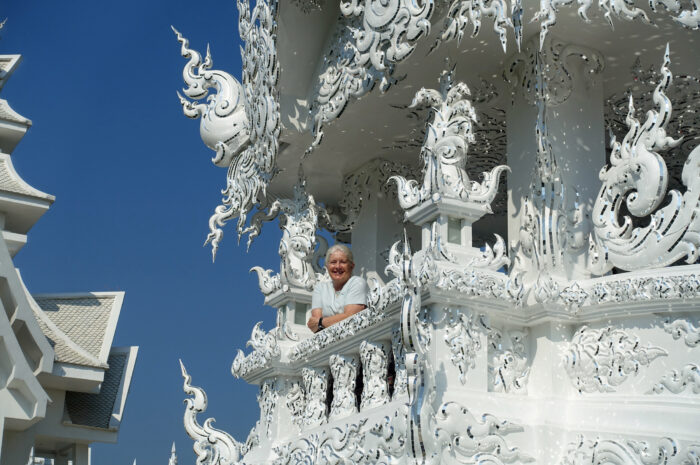
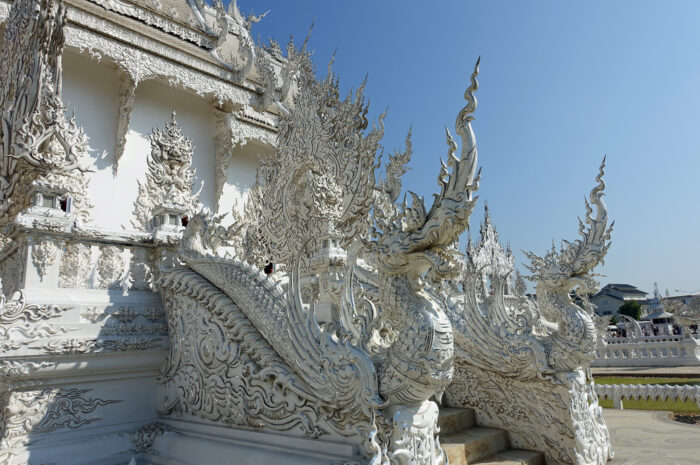
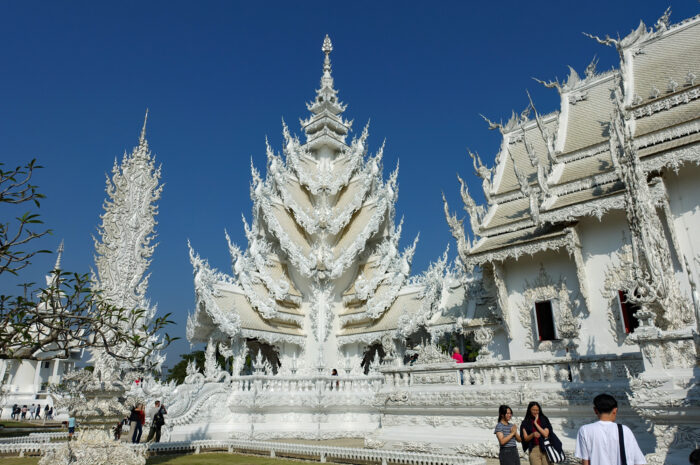
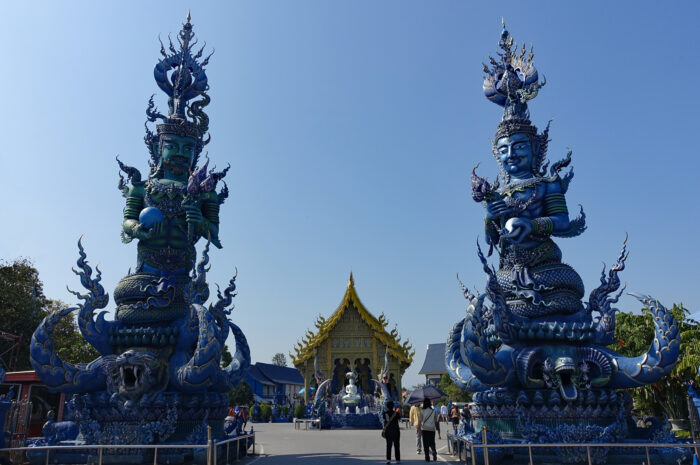



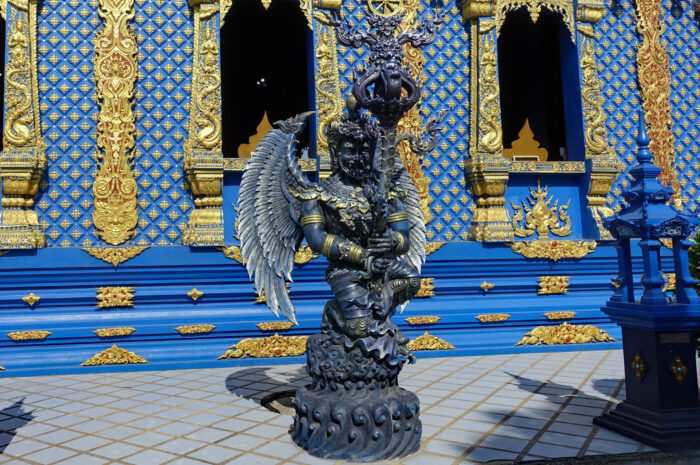
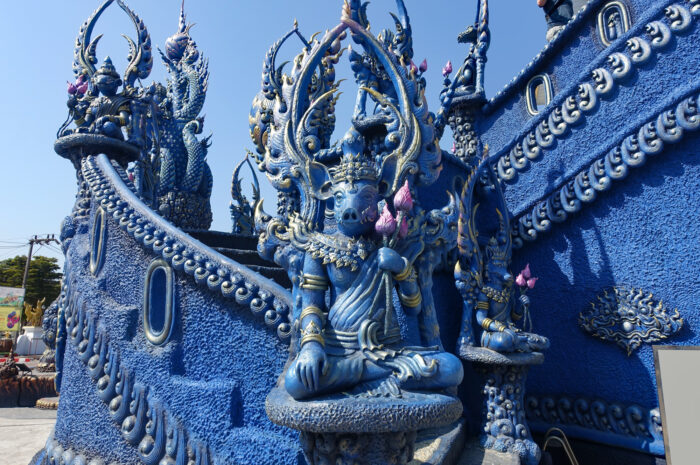
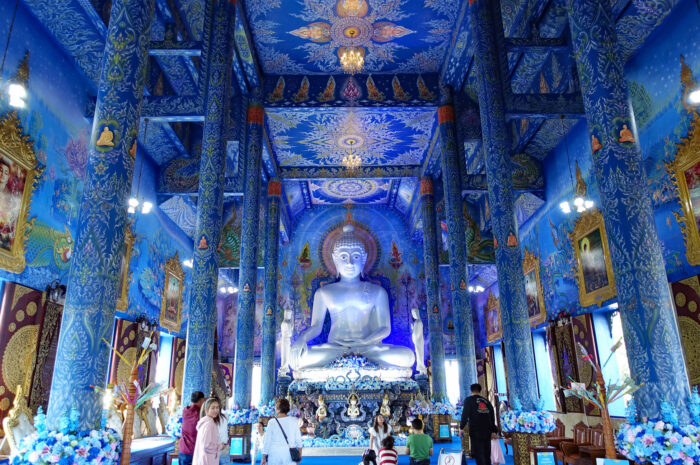


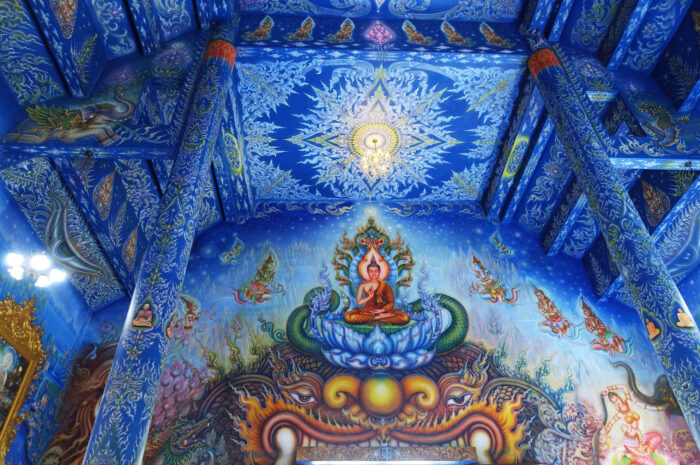


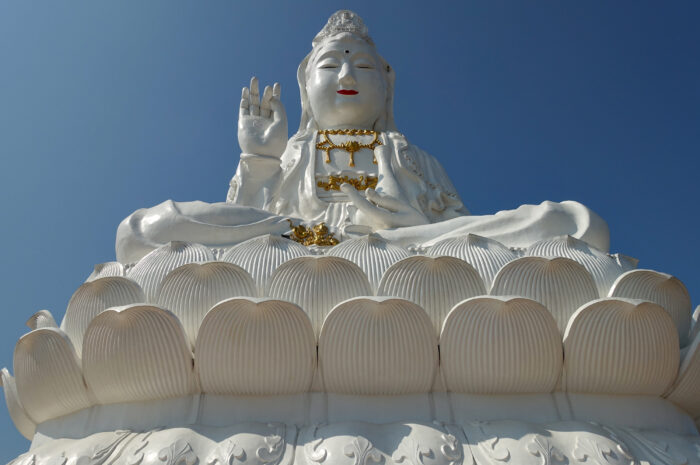
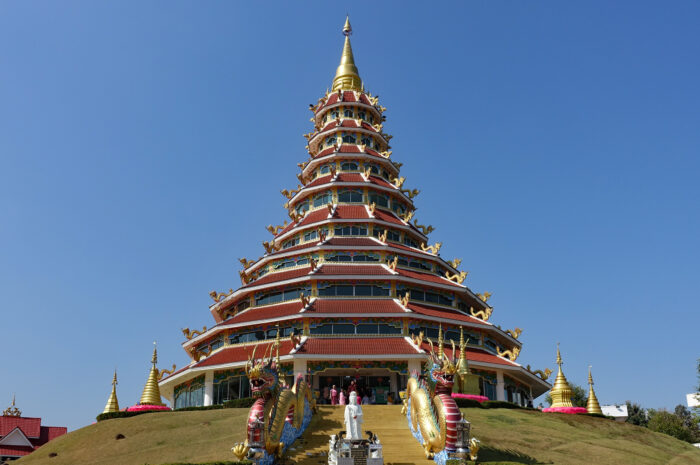

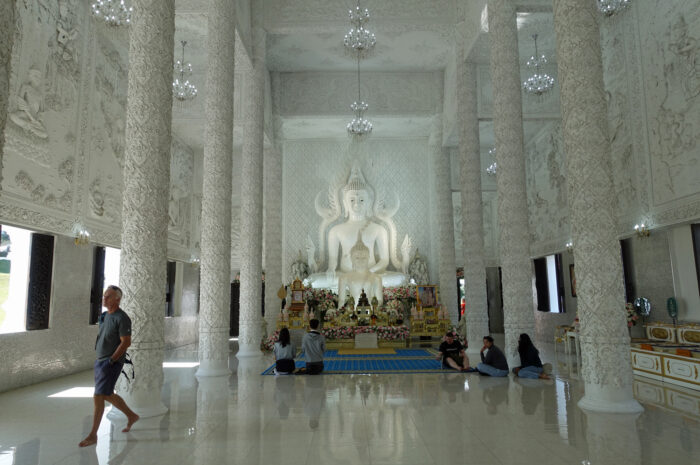
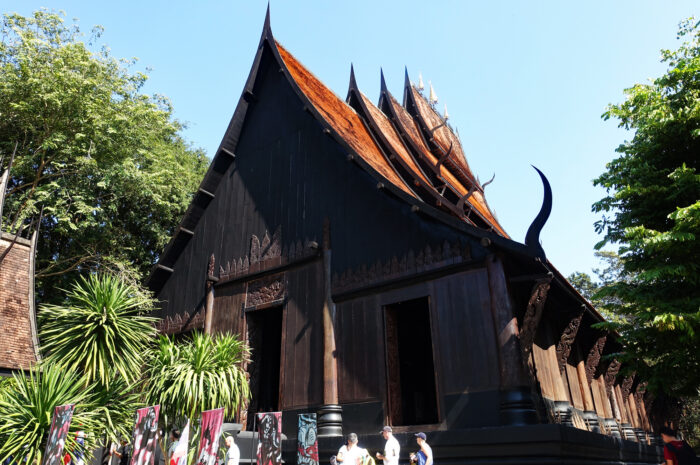

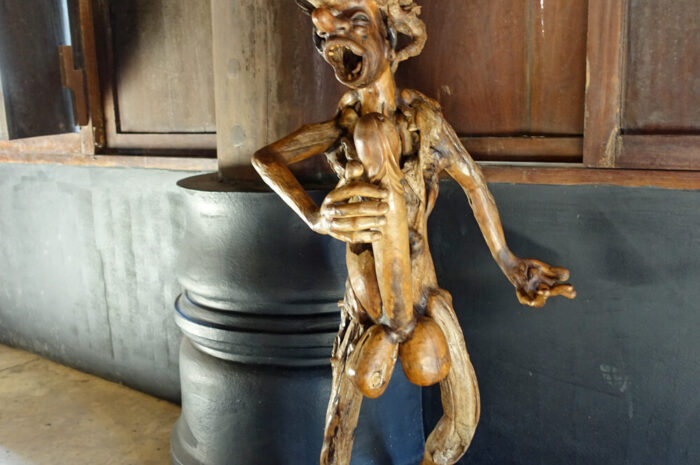


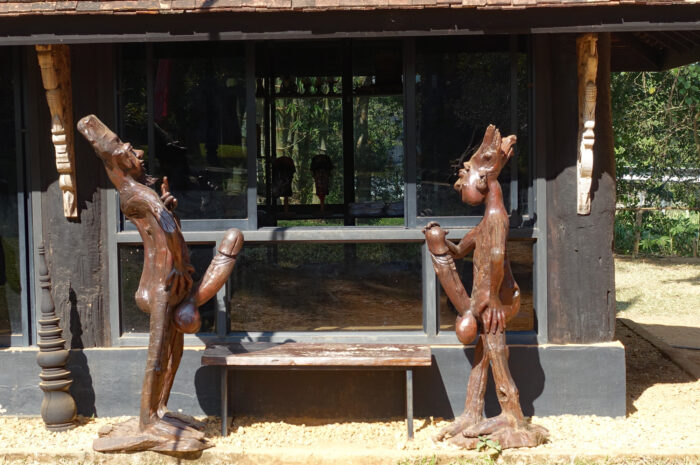

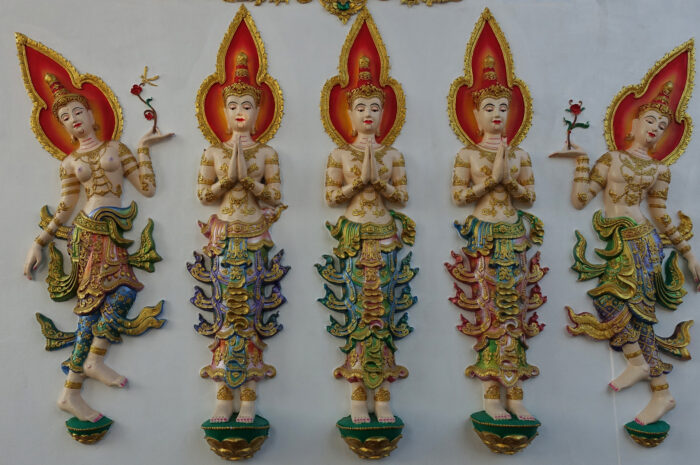
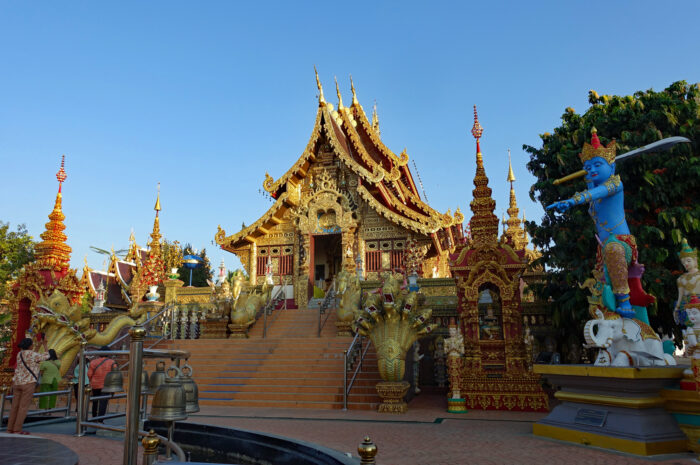
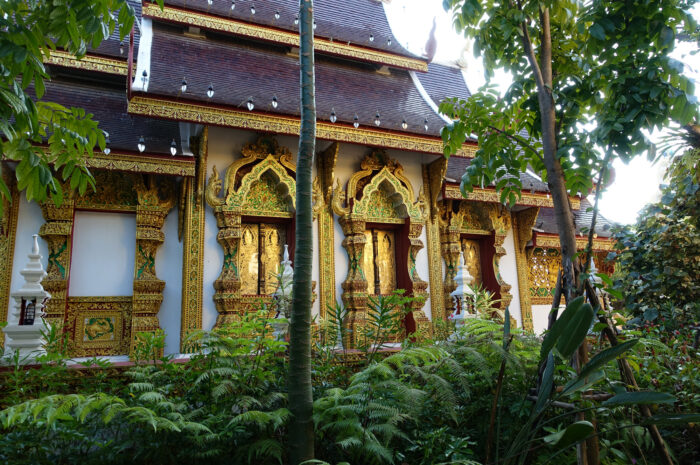
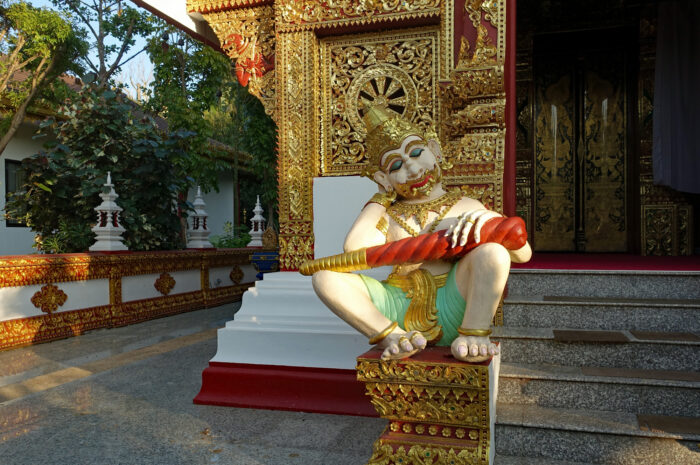
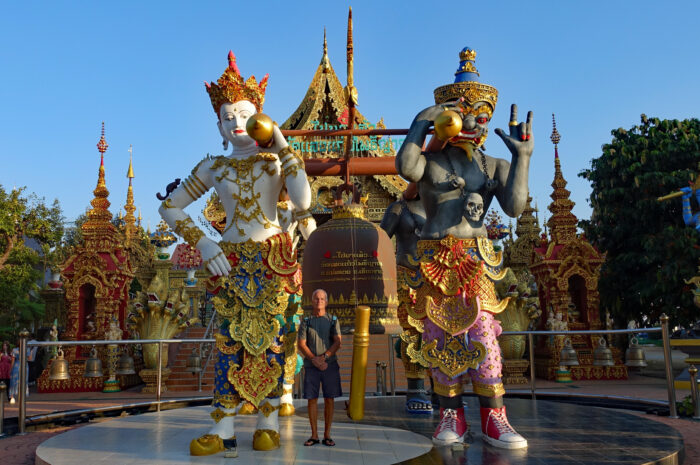
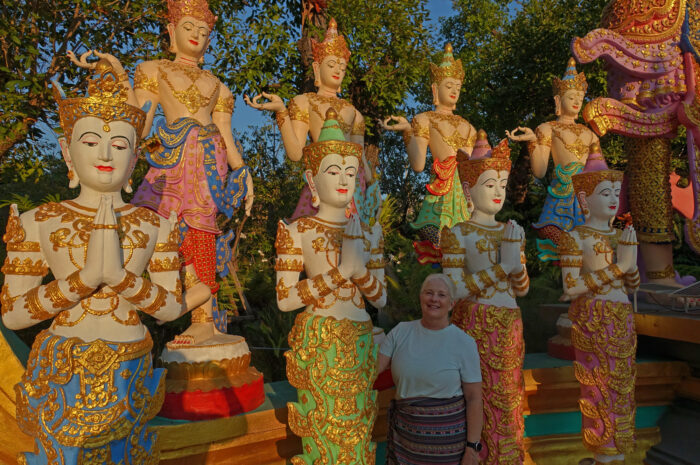
Such a beautiful area! Those are the temples I most want to see especially the white one.
You will love the temples. Hopefully you can spend one or two nights up here, we were a bit rushed during our visit.